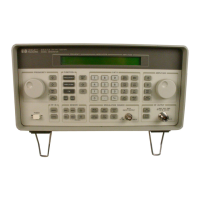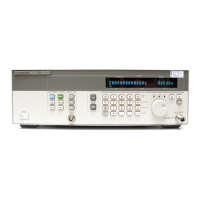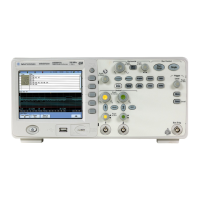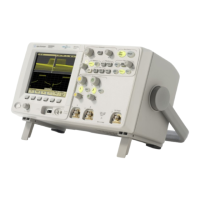244
S:\Hp8960\E1962B CDMA 2000\Pi Release\Reference Guide\Chapters\cdma2000_prog_sync_gen.fm
Test System Synchronization Overview
Commands used for synchronization:
• “CALL:STATus” on page 384
This command queries the test set’s current call processing state. This command supports synchronization
method five. See “Call Processing State Synchronization” on page 233.
• “CALL:STATus” on page 384
This command determines the connected/idle state of a call. A feature called the change detector provides
the user with a way to hold off the response to this query until a call processing state transition has taken
place. See “Connected/Idle Query” on page 234. This command supports synchronization method five.
• :DONE? and :OPC?
These specialized commands can be appended to call processing overlapped commands to support
synchronization method three. See “Call Processing Subsystem Overlapped Command Synchronization
Commands” on page 238.
• :WAIT
This specialized command can be appended to call processing overlapped commands to support
synchronization method two.
See “Call Processing Subsystem Overlapped Command Synchronization Commands” on page 238.
• :SEQ
This specialized command can be appended to call processing overlapped commands to support
synchronization method one.
See “Call Processing Subsystem Overlapped Command Synchronization Commands” on page 238.
• “INITiate:DONE?” on page 479
This specialized command causes the test set to return a mnemonic indicating if a measurement is done. If
not, the returned mnemonic will indicate if the measurement is still executing. This command supports
synchronization method three.
See “INITiate:DONE?” on page 479.
• STATUS:<register>
Status bits in the register are provided to indicate the test set’s call processing state. These bits support
synchronization methods five and six.
Status bits in the “STATus:OPERation:NMRReady Register Bit Assignments” on page 586 are provided to
indicate when a measurement is ready to be fetched. These bits support synchronization method three and
six.
Many other status bits are provided in the GPIB status subsystem that are useful for synchronization. See
“STATus Subsystem” on page 572.
• “SYSTem:SYNChronized” on page 651
This specialized command puts a 1 in the test set’s output queue, the test set responds to the query by
sending a 1 to the external controller indicating that all prior sequential commands have completed, and all
prior overlapped commands have at least begun execution. The condition bit is set then cleared. See
“STATus:OPERation Register Bit Assignments” on page 579. This command supports synchronization four
and six.
• “*OPC” on page 652, “*OPC?” on page 652, and “*WAI” on page 653 (not recommended)
Note: These commands look at all of the test set’s operations collectively. Because multiple processes are
likely to be executing at the same time, it is recommended that the other commands above be used instead.
